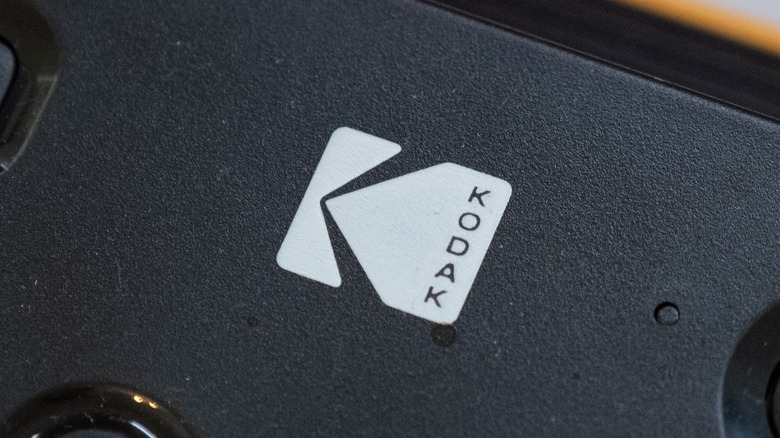Did Kodak Really Hide The Invention Of The Digital Camera?
Once upon a time, photography wasn't for everyone. Cameras were big, expensive, cumbersome machines, far from average-user-friendly. Then George Eastman came along, providing smaller yet still impressive cameras to the masses with convenient rolls of film for them to capture photographs on. Since 1888, his company, Kodak, has remained a major name in film-based media creation. Kodak may not be as big as it once was, but it's still very much active and has evolved its offerings to embrace all of the innovations that have sprung up since its founding.
Now centuries beyond the invention of the photograph, digital photography is the most common form of image taking. There may be debate over whether film or digital is better to level up one's photography, but there's no argument that digital has made it easier than ever to capture images and video in vivid detail and vibrant color. Though it has maintained its roots as a supplier of film and film cameras, Kodak has gotten fully onboard with the digital trend.
This might come as a surprise considering the often-touted claim that decades ago, Kodak hid the creation of the digital camera. Here's what has come to light about how the company's higher-ups treated the invention and why it didn't initially push forward with it publicly.
Kodak brass felt initial digital cameras needed lots of refining
The story of the digital camera goes back to 1975, when Kodak engineer Steven Sasson revealed the first working portable model. The cobbled-together device — comprised of circuits, Super 8 camera pieces, and a digital cassette recorder, among other elements — managed to turn light patterns into electrical signals, which were then transformed to create black-and-white images.
This toaster-sized creation deserves its place among the cameras that changed photography forever, but Kodak brass didn't quite see it. In fact, as Sasson explained to the New York Times in 2015, "They were convinced that no one would ever want to look at their pictures on a television set." This would've been the only way to see those images.
It didn't help that the results of the prototype camera were unimpressive, with it taking 23 seconds to transfer a small, grainy, colorless, 10,000-pixel image to the tape inside. Speaking to PetaPixel, Sasson recalled that the then-industry-accepted pixel minimum for black and white was 1 million, or 2 million for color.
It would take time to perfect this emerging tech, and Kodak was willing to let Sasson continue pursuing it. The company's first digital cameras finally hit the market in the 1990s with a whopping $20,000 price tag.
The story doesn't end here, though. There's another reason that has been given for Kodak's lack push for digital photography — one that's very much secondary to Sasson's prototype not being ready in the 1970s.
Some at Kodak were concerned about digital harming film-related profits
Between Sasson's unveiling of the digital camera in 1975 and the first consumer models being sold, Kodak kept an eye on the concept. In 1978, the company patented the technology, but it remained under wraps. Sasson told the Times he could only discuss and show off his work with those inside Kodak. There was concern that digital could threaten the company's existing business model, even if this wasn't the chief reason for Kodak's hesitation toward digital products.
Kodak thrived in the age of film photography, selling cameras, film, and printing services. Why would it want to bet on digital, which could wipe out the company's profits should it gain traction? Kodak eventually profited immensely off other companies using its patent, which was in effect until 2007, but one has to imagine if the company had stood at the forefront of digital photography instead of trying to keep film relevant as long as possible, it might not have struggled as much as it has in the 21st century, culminating in a 2012 bankruptcy filing.
Overall, Kodak's relationship with digital camera technology was complicated. It was largely put off to the side as an experiment that needed a lot of work before going out to the masses, and also potentially capable of threatening Kodak's stranglehold on film products. What resulted was a company failing to get with the times until it was too late.


